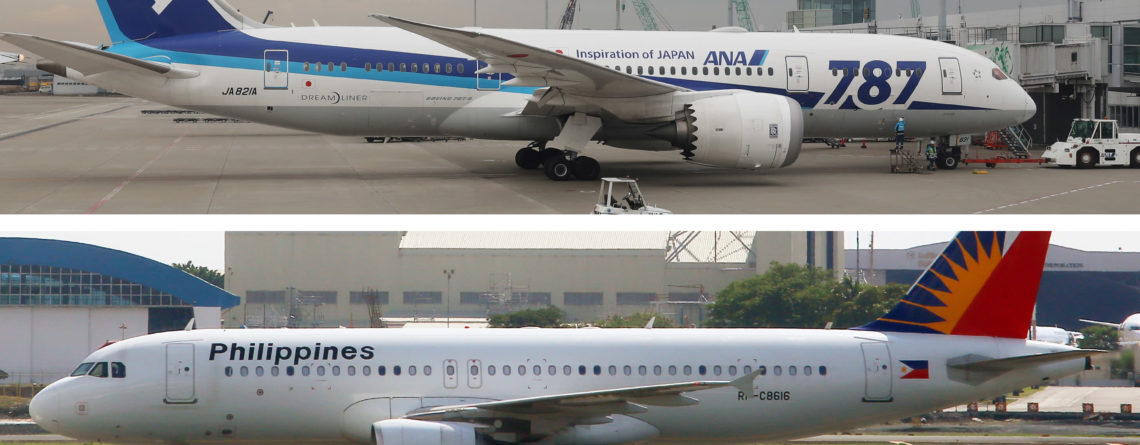ANA prepares for dogfight with JAL in Southeast Asia
By: ERI SUGIURA and SHUNTARO FUKUTOMI
TOKYO — ANA Holdings says its 9.5% stake in Philippine Airlines’ parent company is meant to capture growing demand for air travel between Japan and the Philippines, but the deal announced Tuesday also represents a defensive move as rival Japan Airlines expands rapidly in Southeast Asia.
The intensifying battle between Japan’s two leading airlines is starting to pull in other Asian carriers, creating rival camps in the growing Southeast Asian market.
ANA said it will invest $95 million in PAL Holdings in a deal with the holding company controlled by billionaire Lucio Tan’s family, confirming a Nikkei report last week on the buy-in.
ANA’s expanded partnership with the Philippines’ flag carrier and largest airline will increase code-sharing flights and place an ANA-appointed director on PAL’s board, Tadahiro Uematsu, the Japanese group’s vice president for global strategy, said at a news conference.
With landing slots mostly full at the Tokyo metropolitan area’s Haneda and Narita airports, Uematsu said the deal with PAL is necessary to boost passengers without increasing flights.
ANA, the parent of All Nippon Airways and Japan’s largest airline group by revenue, has had a code-share partnership with Philippine Airlines since 2014. But the investment seeks to cement the carrier’s foothold in Southeast Asia.
“JAL has become a threat to ANA,” said Kotaro Toriumi, an aviation analyst. JAL emerged from its 2010 bankruptcy filing leaner, helping it outperform ANA on profitability. An injection of taxpayer money fueled the flag carrier’s recovery.
In light of this, Japan’s transport ministry initially banned JAL from launching new routes and making growth-oriented investments. But once this restriction period ended in spring 2017, the airline moved into expansion mode and began peeling away ANA’s partner airlines.
JAL announced a code-sharing deal with Hawaiian Airlines in September 2017, tying up with a carrier that had teamed with ANA. JAL and Hawaiian Air filed applications last year with U.S. and Japanese authorities to form a joint venture. In October 2017, JAL announced a tie-up with Aeromexico, which also switched from ANA.
A deal with Garuda Indonesia last September 2018 showed JAL’s ambitions in Southeast Asia. Although the Indonesian flag carrier was in a code-share partnership with ANA, it announced plans for a joint business with JAL, which aims to benefit from rising air travel demand in the region’s most-populous country and biggest economy.
Meanwhile, ANA has consolidated its lead since surpassing JAL in international flight passengers for the first time in fiscal 2015. “Not only code-sharing but more company tie-ups, including investment or a joint venture, are necessary to prevent JAL from” taking more of ANA’s partners, said Toriumi, the analyst. In 2016, ANA took an 8.8% stake in Vietnam Airlines, which used to have a code-share agreement with JAL.
PAL seeks to expand its Japanese flight network to respond to growing demand from Filipino tourists visiting the country. It also seeks to strengthen its financial base. How much benefit ANA’s 9.5% investment will bring remains unclear. Local laws in the Philippines cap foreign ownership of airlines at 40%.
“We share the same values with PAL, which is the only full-service carrier in the Philippines and is highly rated recently for its service,” ANA’s Uematsu said.
PAL President Jaime Bautista said, “We aim to build a relationship that is mutually beneficial with an eye to a more progressive future.”
Investment and joint businesses have become a global trend in the aviation industry, as more carriers reach outside their alliance for expansion. Delta Air Lines, a member of Skyteam, partners with Virgin Atlantic, Aeromexico, Brazil-based Gol Transportes Aereos and China Eastern Airlines, some of which do not participate in any alliance. American Airlines invested $200 million in China Southern Airlines in 2017, giving the carrier a chance to gain footholds in Chinese destinations beyond Beijing and Shanghai.
Source: Nikkei Asian Review

